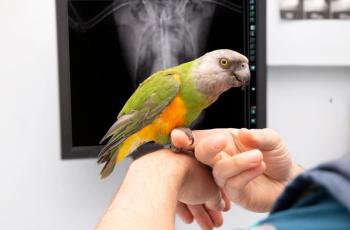
Network offers early warning system for canine health
An analysis of more than 26,000 dogs could give veterinarians and researchers data to help treat canine patients.
A study recently published in the open-access journal, PLOS Computational Biology, "Constructing the First Comorbidity Networks in Companion Dogs in the Dog Aging Project (DAP)," analyzed 26,614 dogs and their health conditions to reveal that diseases tend to go together. Veterinarians and researchers can use these data to help treat canine health issues.
“Because pet dogs share our homes, environments, and many of our age-related diseases, mapping how their illnesses cluster and cascade offers a powerful window into the same multimorbidity processes that erode human health and points to earlier detection and prevention strategies for people, too,” the researchers noted.1
When humans and their dogs age, conditions and diseases will accumulate. However, according to the research, some are more likely to be comorbid than others. To help gain a better understanding of which conditions could occur in these canine patients as they age, researcher Antoinette Fang, of the Fred Hutchinson Cancer Center in Seattle, Washington, and her colleagues used owner-reported data from dogs across the DAP, which is a long-term study tracking the health of dogs as they age. The researchers then collected data on 160 health conditions from the participating dogs and created comorbidity networks, demonstrating which diseases tend to show up together in dogs and in what order.
“Mining owner-reported data from the Dog Aging Project, we built the first large-scale canine comorbidity network, confirming that diabetes often occurs before cataracts and revealing that health problems tend to cluster around a few key diseases as dogs age,” the authors of the study noted.
These new networks noted some expected comorbidities, such as diabetes co-occurring with blindness or dogs with kidney disease also tending to have hypertension. However, new connections presented themselves within the data, including an association between low iron in the blood and excess protein in the urine. The researchers also noted that when the diseases occurred, dogs tended to suffer hip dysplasia before osteoarthritis, dry eye syndrome before ulcers, and diabetes before cataracts.2 This current study relied on client reports, and the authors hope that these associations and networks will help guide veterinary teams and give researchers some new ideas to improve the lives of aging dogs.
“When we split the data by life stage, we saw disease webs become denser and more centered on a few key conditions as dogs grew older, echoing patterns seen in people. Together, these findings show that network analysis of large pet health data sets can guide clinicians, inform breeding and prevention strategies, and ultimately improve the well-being of both dogs and humans,” the authors stated in their summary.2
The data for this research were collected using the Health and Life Experience Survey from the 2021 DAP curated data release and was in support by the National Institutes of Health U19 grant AG057377 (DP, KC, JM), as well as additional grants and private donations, including generous support from the Glenn Foundation for Medical Research, the Tiny Foundation fund at Myriad Canada, the WoodNext Foundation, and the Dog Aging Institute.2 Each funder had no role in the study design, data collection and analysis, decision to publish, or preparation of the manuscript.
References
- A new network could help predict health problems in your pup. News release. EurekAlert!. August 14, 2025. Accessed August 20, 2025.
https://www.eurekalert.org/news-releases/1094069 - Fang A, Kumar L, Creevy KE, Promislow DEL, Ma J; Dog Aging Project Consortium. Constructing the first comorbidity networks in companion dogs in the Dog Aging Project. PLoS Comput Biol. 2025;21(8):e1012728. doi:10.1371/journal.pcbi.1012728
Newsletter
From exam room tips to practice management insights, get trusted veterinary news delivered straight to your inbox—subscribe to dvm360.




